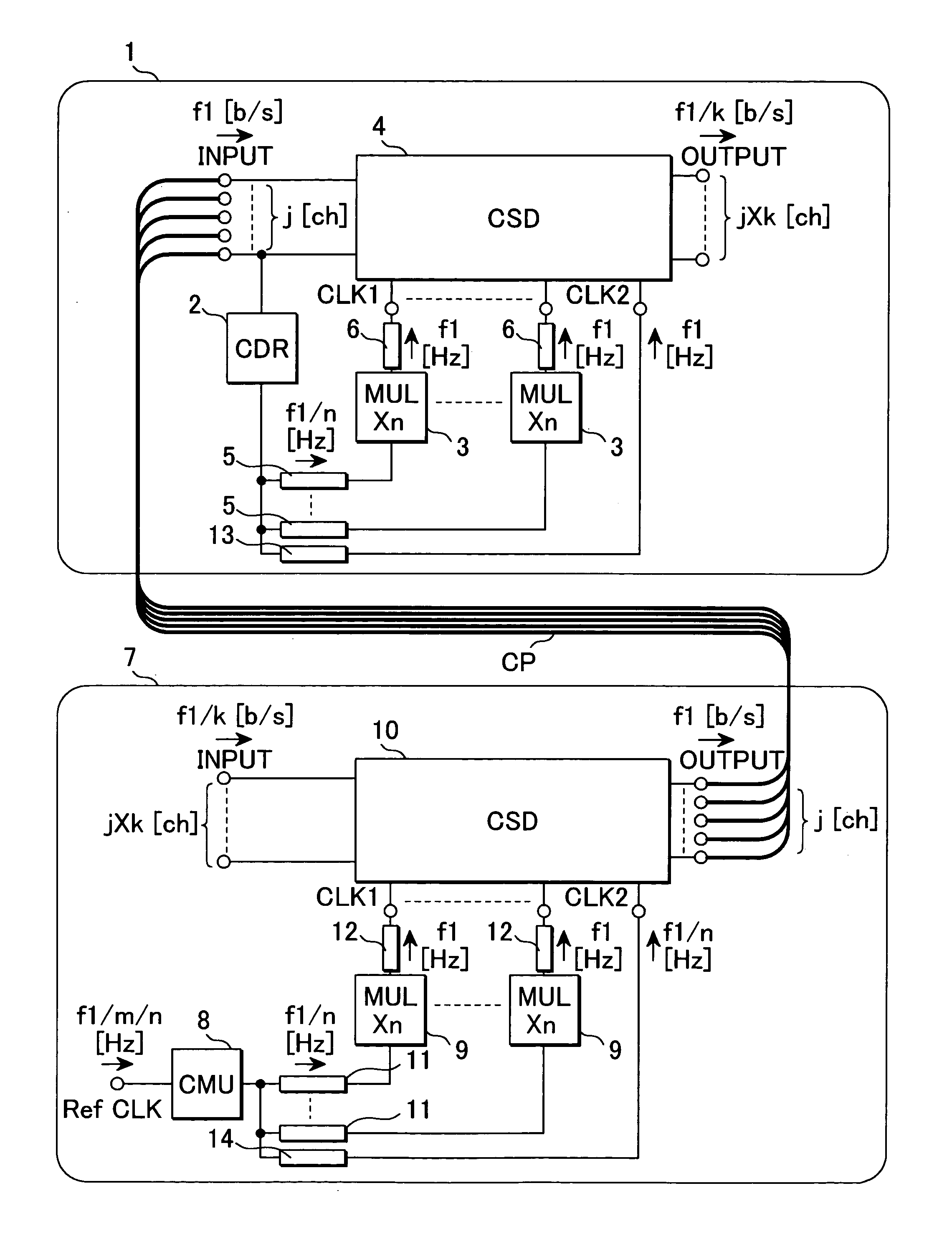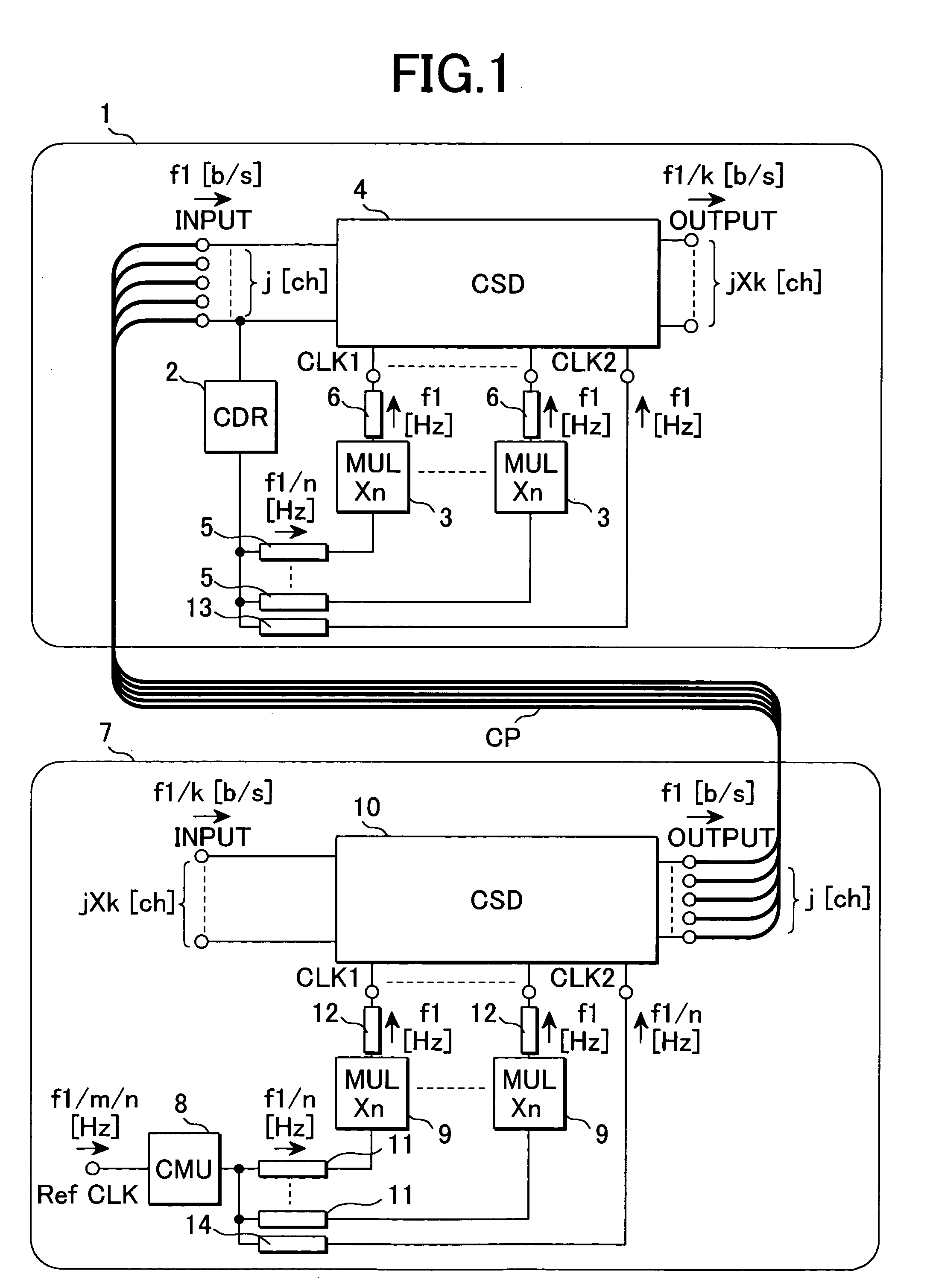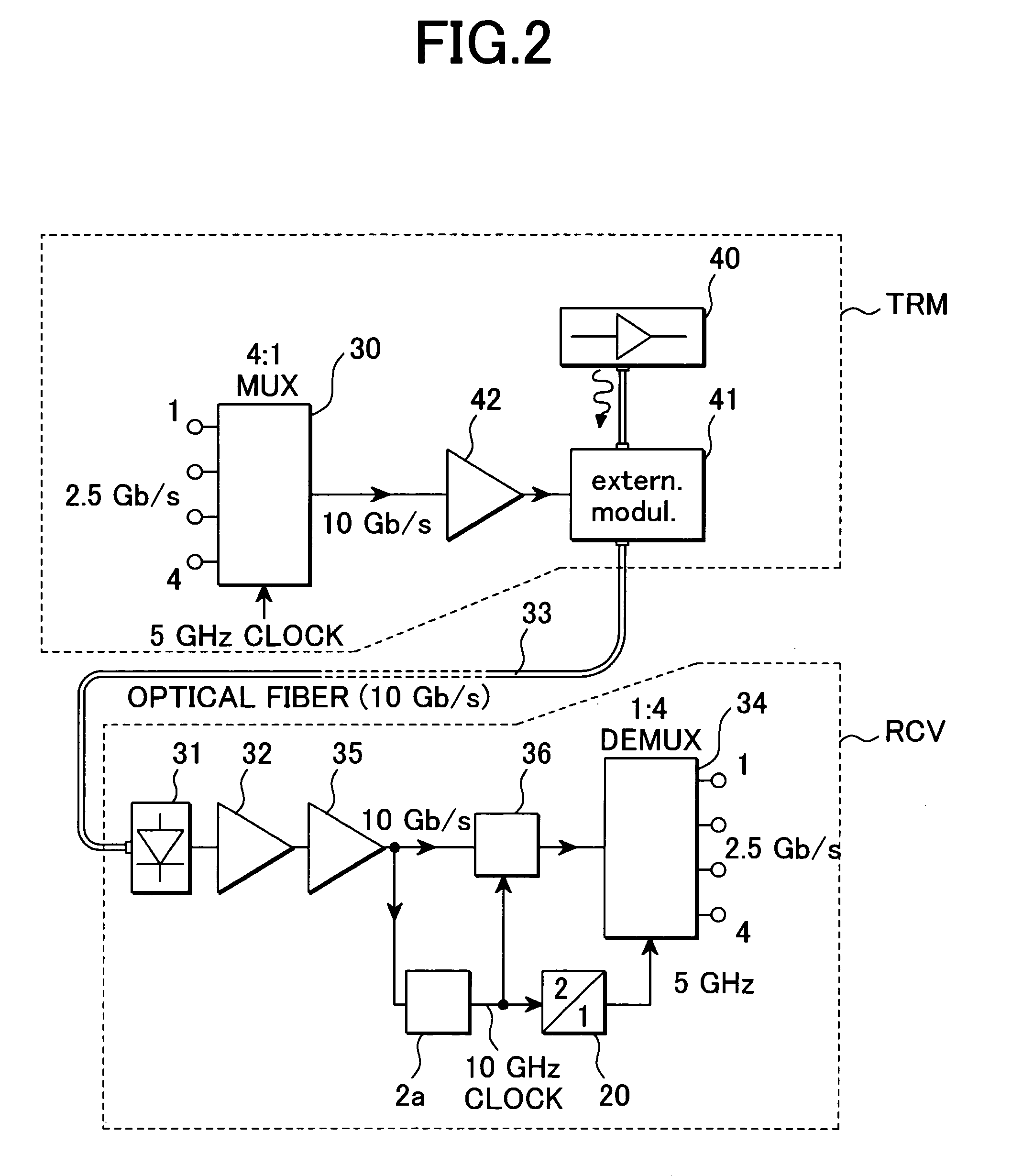Receiver circuit and transmitter circuit
a receiver circuit and receiver technology, applied in the direction of generating/distributing signals, pulse techniques, baseband system details, etc., can solve the problem of amplitude drop of clock signals
- Summary
- Abstract
- Description
- Claims
- Application Information
AI Technical Summary
Benefits of technology
Problems solved by technology
Method used
Image
Examples
first embodiment
[0045]FIG. 1 is a circuit diagram showing a receiver circuit and a transmitter circuit according to the invention. A receiver circuit 1 shown in FIG. 1 is composed of a synchronous circuit (CDR: clock data recovery) 2 that receives “j” pieces of serial data signals of a data rate of f1 b / s, extracts and recovers a clock signal component having a frequency of f1 / n Hz (n: two or larger natural number) from one data signal of them, a multiplier (MUL) 3 that multiplies the frequency of the clock signal by “n” and a synchronous digital circuit (CSD) 4 that decides and recovers the input data signals using the multiplied clock signal CLK1 as the criterion of timing.
[0046]The output terminal of the synchronous digital circuit 4, that is, the output terminal of the receiver circuit outputs parallel signals of a data rate of f1 / k b / s and “j×k” channels acquired by demultiplexing the input serial data signals.
[0047]Assuming that interconnect 5 that connects the output terminal of the synchron...
second embodiment
[0066]FIG. 5 is a circuit diagram showing the receiver circuit and the transmitter circuit according to the invention.
[0067]A circuit equivalent to this embodiment is a transceiver circuit that performs the time division multiplexing of “k:1” based upon “k” pieces of parallel signals, transmits data the data rate of which is f1 b / s on one transmission line and can demultiplex and recover a time-division multiplexed signal in “1:k” again. In FIG. 5 and the following description, a case of “k=16” is given for an example, however, it need scarcely be said that “k” may be also 2 or a larger natural number.
[0068]In shown in FIG. 5, a receiver circuit (RCV) 1a is composed of a synchronous circuit 2c that receives a serial data signal the data rate of which is f1 b / s, recovers and outputs a clock based upon the data signal, a multiplier 3a, a flip-flop for decision 4a that decides and recovers the data signal, a demultiplexer (DEMUX) 22b that performs the demultiplexing of “1:2” and freque...
third embodiment
[0082]FIG. 6 is a circuit diagram showing the receiver circuit and the transmitter circuit according to the invention.
[0083]This embodiment is different from the first embodiment shown in FIG. 1 in configuration in which a clock signal is distributed. A clock signal having a frequency of f1 / n Hz and output from respective synchronous circuits 2d, 8b in a receiver circuit 1b and a transmitter circuit 7b is respectively branched and is input to multipliers 3b, 9b that output a clock signal having a frequency of “n” times via interconnects 5b, 11b and multipliers 3c, - - - , 9c, - - - that similarly output that output frequencies of n / 2 times, n / 4 times, - - - , f1 / n×2 times.
[0084]Besides, the clock signal is input to each frequency divider 20d that outputs a half frequency, the output is cascaded and frequencies of f1 / n / 2 Hz, f1 / n / 4 Hz, - - - , f1 / k Hz are output. Clock signals respectively output from the multipliers, the frequency dividers and the synchronous circuits are input to r...
PUM
 Login to View More
Login to View More Abstract
Description
Claims
Application Information
 Login to View More
Login to View More - R&D
- Intellectual Property
- Life Sciences
- Materials
- Tech Scout
- Unparalleled Data Quality
- Higher Quality Content
- 60% Fewer Hallucinations
Browse by: Latest US Patents, China's latest patents, Technical Efficacy Thesaurus, Application Domain, Technology Topic, Popular Technical Reports.
© 2025 PatSnap. All rights reserved.Legal|Privacy policy|Modern Slavery Act Transparency Statement|Sitemap|About US| Contact US: help@patsnap.com



